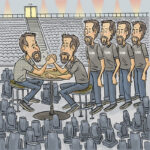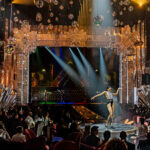Since an infrared camera measures the variances in heat or heat energy to create an image (called infrared radiation), there are some details to consider when using an IR camera, including distance from camera to target, camera operating temperatures, the temperature of the target and the camera’s accuracy and sensitivity to high and low temperatures. If the distance is 20 feet or less from the target, then most standard lenses will work. If it’s greater than 20 feet, then a telephoto lens will be needed to capture detail. Normal operating temperatures for the camera will be listed on the spec sheets, and they are important to know. These indicate the maximum and minimum temperatures at which the camera can accurately function. And Infrared technology uses variances in temperature to define an image. Therefore, your target must have some difference in temperature to relative to its surroundings. IR technology does have its limitations, including the fact that it tends to work better in darker environments. But with a little experimenting and creative thinking, it can be used in typical performances with moderate levels of stage light as well.
—From “Video Digerati” by Vickie Claiborne, PLSN, Jan. 2013


